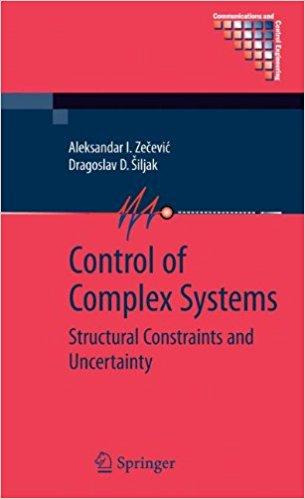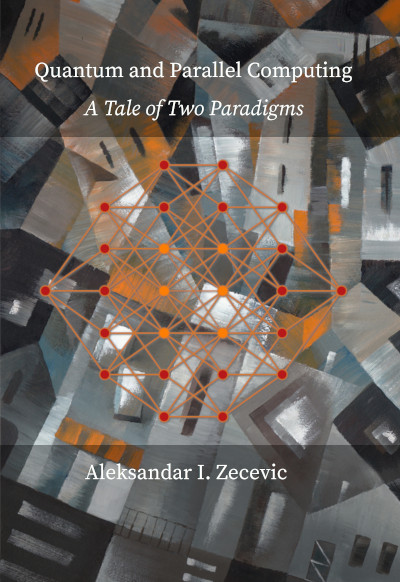Professor of Electrical and Computer Engineering
SCDI 4025-O · ☎ (408) 554-2394 · azecevic@scu.edu
Professor of Electrical and Computer Engineering
SCDI 4025-O · ☎ (408) 554-2394 · azecevic@scu.edu
A representative selection of my technical papers is available for download here, and descriptions of my books on control theory and high-performance computing are shown below.
 Control of Complex Systems: Structural Constraints and Uncertainty is written for practicing engineers, researchers and students working in control theory and related areas. It focuses on control design under information structure constraints, with a particular emphasis on large-scale systems. The complexity of such systems poses serious computational challenges and severely restricts the types of feedback laws that can be used in practice. This book systematically addresses the main issues, and provides a number of applications that illustrate potential design methods, most which use Linear Matrix Inequalities (LMIs), which have become a popular design tool over the past two decades.
Control of Complex Systems: Structural Constraints and Uncertainty is written for practicing engineers, researchers and students working in control theory and related areas. It focuses on control design under information structure constraints, with a particular emphasis on large-scale systems. The complexity of such systems poses serious computational challenges and severely restricts the types of feedback laws that can be used in practice. This book systematically addresses the main issues, and provides a number of applications that illustrate potential design methods, most which use Linear Matrix Inequalities (LMIs), which have become a popular design tool over the past two decades.
Authors Aleksandar I. Zecevic and Dragoslav D. Siljak use their years of experience in the control field to also:
 Both quantum and parallel computers have changed the way we think about scientific computing. There is no doubt that these two paradigms are very different, as are many of the problems that they are designed to solve. It is reasonable to assume, however, that both approaches will remain relevant for the foreseeable future, and that they will influence each other in ways that we cannot yet anticipate. If that comes to pass, it will be helpful to know as much as possible about each of these two fields.
Both quantum and parallel computers have changed the way we think about scientific computing. There is no doubt that these two paradigms are very different, as are many of the problems that they are designed to solve. It is reasonable to assume, however, that both approaches will remain relevant for the foreseeable future, and that they will influence each other in ways that we cannot yet anticipate. If that comes to pass, it will be helpful to know as much as possible about each of these two fields.
With that in mind, this book describes some key ideas and results that pertain to quantum and parallel computing, and presents them in a way that is self-contained. In order to ensure that, a number of relevant mathematical fields are reviewed in some detail, including matrix theory, functional analysis, number theory and numerical analysis. There is also a relatively thorough discussion of quantum mechanics and cryptology, without which it would be impossible to explain how quantum computers operate, and how they can be used to break existing encryption schemes.